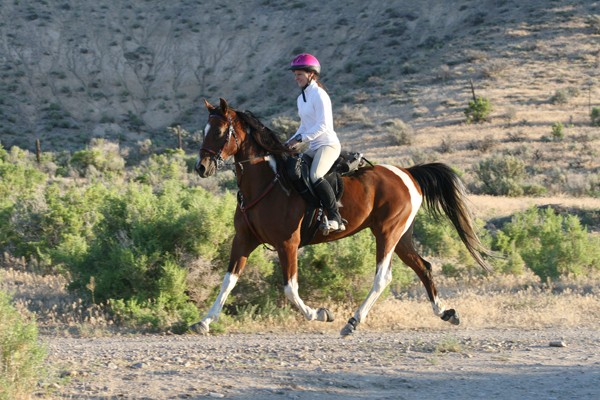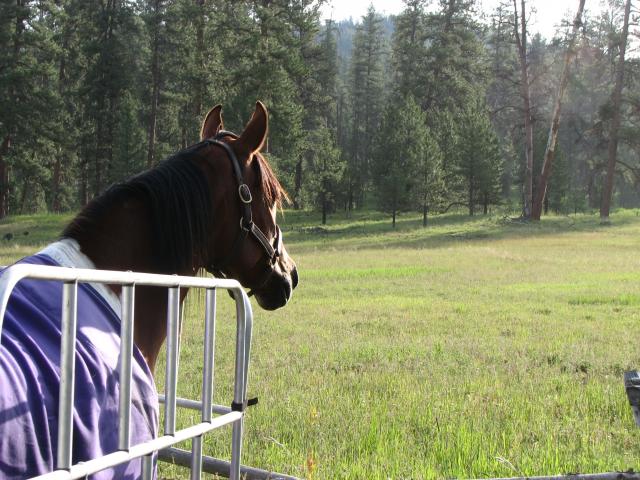I don’t think many can argue that keeping your horse barefoot is not a commitment. Anyone who has done this for any length of time will have had set-backs, successes, failures, epiphanies and triumphs. For most of us, success has out-weighed set-backs, although the ratio may not be in our favor all the time.
In this post, I mentioned the barefoot Gods. Of course I joke about this lightly, but there are definite outside factors such as diet, environment, trimming and the horse himself.

It seems to be the time of year (at least around here) where people start throwing up their hands, saying “I tried,” while on hold with the farrier trying to make an appointment to get shoes put back on. I am NOT saying this is right or wrong, just posting an observation. It’s difficult this time of year- most people start riding more, there is typically wet weather to deal with, spring grass is coming up and after a long winter people want to RIDE! It is frustrating to have a competition (or pleasure) schedule beginning and being stuck at home with a horse who isn’t 100% while your friends are out having fun without you.
Last year I dealt first hand with a very mild bout of laminitis, as did many people around the valley. Luckily it was mild, but did include sensitivity and was later confirmed by my gelding who I used to joke had maintenance-free feet. Never saw a flare in his life. Several months after he was sore, he started growing out white-line separation and actually had a flaring at the toe. What was most alarming, was the bruising at the heel that grew out for quite some time. In hindsight, we determined that he was exaggerating a heel-first landing due to sensitivity at the toe (although he was not positive to hoof testers).

While he was never obviously lame, I noticed. He uncharacteristically sought out the soft ground instead of pounding down the middle of the road, shortened his stride on the hard-pack and returned to normal on the soft stuff. I missed the first few rides of the year, as I just didn’t want to risk hurting him further. We treated him with a short period of bute, rode him only in boots and then glued-on Easyboot Gloves a week before the first ride we completed last year (end of May). He did great at the ride, but showed subtle signs of sensitivity until the end of July. His normal rock-crunching hooves continued to prefer side-passing gravel and he slowed down over rock which definitely wasn’t normal for him!

What happened last year that was so different than the three years prior that I never had any problems with? We do have some answers. We had a ridiculously WET spring last year. Due to the rain, we had a lot of grass come in on the 200 acres the horses roam. Now keep in mind this is not lush pasture grass, but is wild grass in the foothills. Definitely not sugar-free, but not nearly the same as irrigated pasture where you expect to see laminitis and founder. Not only did we have an abundance of grass, but we had a very long period of warm days with below freezing nights. When the temperatures drop, the sugars become concentrated and offer a nice little sugar spike in the early am until things warm up later in the day.

We later had our hay and beet pulp analyzed and this is when we had our “Ah-HAH” moment. The hay was good, but the beet pulp was very high in Non-Structured Carbohydrates. Much higher than we thought. At the end of winter, the horses had been getting beet pulp (soaked but not rinsed) in decent amounts which we are certain set off the inflammation of the laminae in most of the horse’s feet. The grass exacerbated the issue.
This was the first time in three years that I had problems keeping a barefoot horse. I guess what I am trying to say is that even if you have been lucky enough to have a flawless transition from shoes to bare, it doesn’t mean things will stay that way. Nothing is static in horses, and as a wise horse-trainer once told me, “There is nothing like horses and kids to keep you humble.”
I had always in the past skimmed over articles on diet and sugar/starch in the barefoot horse. I honestly thought barefoot success was more about environment than diet. I’ll tell you, eating that crow didn’t taste so good. I have since obviously changed my thinking and I made several changes in my feeding. I started researching different available feeds looking for something appropriate for my barefoot endurance horses. I switched off the feed I was using, which was 24-27% NSC and put them on a feed that is only 17% NSC. I stopped feeding beet pulp freely, and now when I do feed it, I rinse numerous times, soak, and rinse again. Literally rinse and repeat!
I am committed to making barefoot work even more than ever, which means sometimes making sacrifices. Last year my gelding was in contention for Sophomore Horse of the Year, an award sponsored by the Pacific Northwest Endurance Rides, but I knew that skipping the first several rides would make it difficult to catch up. Even so, we had some fantastic rides from the middle of the season on, and I felt good about my decision not to ride when he wasn’t 100%. I guess one could argue that he shouldn’t have been ridden until he returned to complete normalcy, which was about two months after I felt he was good to take to rides, but I felt confident in my decision and had he shown more obvious discomfort I would not have asked him to go. I think exercise is important in stimulating hoof growth also.

Barefoot is certainly not for everyone, but it is exciting to see so many people try it out. It will be interesting to see how many are still bare at the end of the season. There is a definite learning curve when it comes to boots (When to boot? How to boot? How often to boot? Boots at rides, boots at home, etc), but there is also so many other factors that contribute to success. Hopefully things work out for each and every one of you, but please remember, there will be road bumps and detours along the way. It takes commitment to get around them and find the way. It IS worth it at the end!!
~ Amanda Washington
SW Idaho





Great Article and pictures! I think the first paragraph is so well put, and says it all. I think I may steal it! :0)